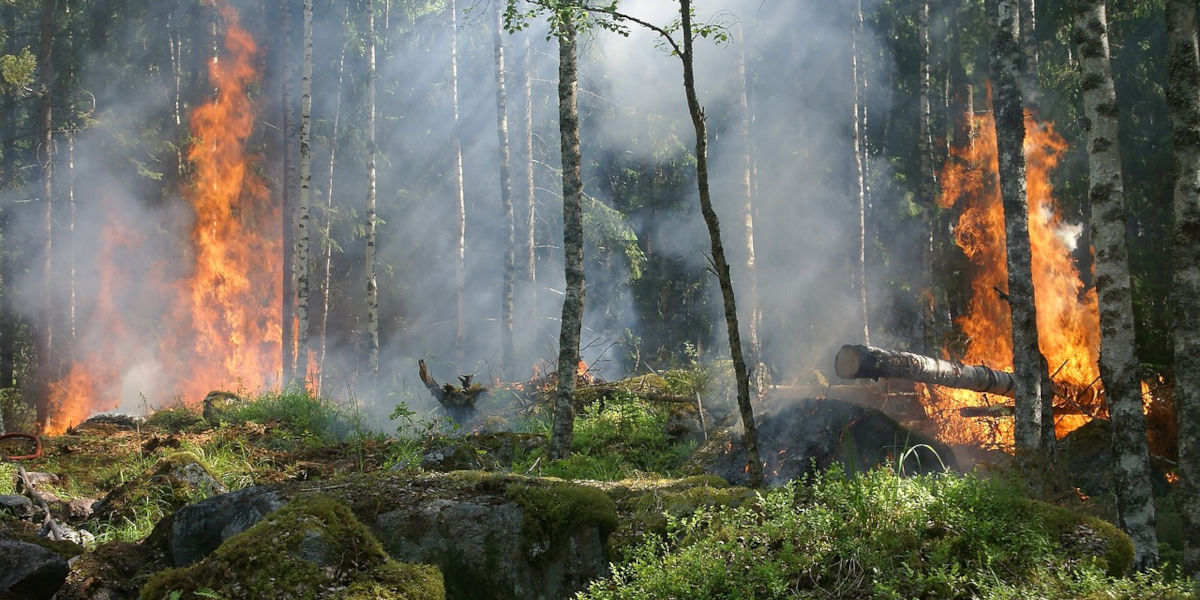Forest fires, or wildfires, are an extreme manifestation of nature, an undeniable testament to its might, and one of the most majestic, yet fearsome phenomena one could ever witness. However, having a clear understanding of what causes forest fires and the intricate nature of fire ecology can help us minimize the devastating impact of these events, and potentially, utilize them to the environment's benefit.
Introduction to Forest Fires
Each year, vast expanses of forests worldwide succumb to fires. These fires are responsible for the obliteration of vegetation, wildlife, and human habitations, while also contributing significantly to global warming. Despite the destruction they cause, forest fires are essential ecological phenomena that help maintain the health and diversity of our forests. To fully comprehend this dual-nature of forest fires, one must first understand the underlying causes of these events and the fundamental principles of fire ecology.
What Causes Forest Fires?
Forest fires can be triggered by both natural and human factors. Natural causes include lightnings, volcanic eruptions, and the spontaneous combustion of dry plants and decaying matter. On the other hand, actions of humans also inadvertently lead to the origins of a significant portion of these fires. Human-induced forest fires may include intentional burn strategies aimed at land clearing for agriculture, controlled burning to prevent extensive wildfires, or tragically, through acts of arson. Furthermore, reckless actions, such as improperly discarded cigarette butts or campfires left unattended, can also give rise to forest fires.
Understanding Fire Ecology
Fire ecology refers to the study of role of fire in the functioning of an ecosystem. From this perspective, fire is an essential component of forests, similar to rain, wind, or sunlight. The destructive force of forest fires can stimulate the germination of some plant species, reduce competition by eliminating underbrush, and restore nutrients back to the soil. Therefore, understanding fire ecology can offer insights into preventive measures or controlled burn strategies, ensuring a balance between the requirement of forest health and the absolute need to prevent uncontrollable wildfires.
The Biggest Forest Fires in History
Sadly, throughout history, there have been countless instances of gargantuan forest fires that have wreaked havoc upon vast tracts of land, eradicating all life forms in their path. These fires stand as reminders of the destructive potential of wildfires, reinforcing the necessity of better forest management and greater knowledge of what causes forest fires. From the 1871 Peshtigo Fire in Wisconsin, USA, that burnt down around 1.2 million acres to more recent ones like the 2019-2020 Australia Bushfires, these conflagrations have left indelible marks on the pages of our history.
Forest fires, also known as wildfires, are arguably nature's most dangerous and destructive event. They pose a drastic and immediate threat to ecosystems and human settlements alike. In recent years, we've seen a disturbing increase in the frequency and scope of these fires. To comprehend and possibly mitigate these issues, it's essential to understand their causes and contributory factors.
Human Activities as Forest Fire Raison d'être
It might come as a surprise to many, but a significant cause of forest fires is humans too. Our ever-growing need for land for agriculture, housing, and industry has placed considerable pressure on forests. In many developing countries, slash-and-burn agriculture (clearing patches of forests for growing crops) lead to uncontrolled fires. Carelessness acts like discarding cigarette butts, leaving unattended campfires, or mishandling flammable materials also spark off wildfires.
Arson, the deliberate act of setting forests on fire for mischief, revenge, or economic benefits, tops the list of human-induced causes. However, there's also a constructive man-made fire, known as 'Controlled or Prescribed Burning.' It's a preventive measure that eliminates excess vegetation, reducing the chances of a much larger, potentially uncontrollable wildfire later.
Furthermore, modern factors such as climate change also escalate the forest fire situation. An ecosystem already stressed by increased temperatures, swings between drought, and heavy rainfall is prime for wildfires.
Natural Causes: Mother Nature's Fiery Hand
Beyond man-made causes, many forest fires occur due to natural factors. Perhaps the most common of these is lightning. Some areas are particularly prone to lightning strikes, leading to spontaneous ignition of the surrounding vegetation.
Another natural cause involves volcanic activity. The immense heat from volcanic lava and pyroclastic materials can set nearby vegetation on fire, leading to extensive forest fires. In some forest ecosystems, certain plant species have evolved to withstand or even rely on forest fires for their survival and growth. These species, such as the lodgepole pine and the jack pine, have cones that only open to release their seeds when exposed to the intense heat of a fire, propagating their species in the aftermath of a blaze.
Countering the Flames
Forest fires pose a mammoth challenge for conservation specialists and governments alike. Various measures can be undertaken to control and prevent these fires, ranging from stricter enforcement of land use regulations to educating the public about fire safety measures.
Moreover, satellite technology and advanced forecasting models come in handy in predicting areas of high fire risk, helping us concentrate our preventive efforts efficiently. Controlled burns, as mentioned earlier, also prove incredibly useful.
In conclusion, understanding the causes of forest fires helps us devise effective strategies to manage and mitigate them. Responsible human behaviour, combined with innovations in predictive and fire-fighting technology, will be crucial to safeguarding our precious forests for future generations to come.




